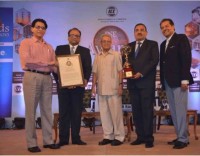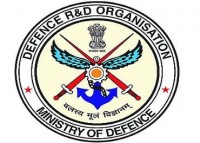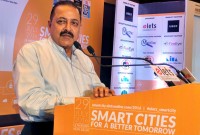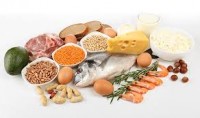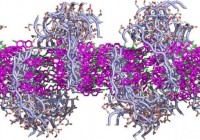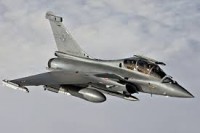A seminar on Make in India for was conducted on 19th April, 2016. Main suggestions received during the seminar are as follows:
• Nurture aerospace Research & Development (R&D) in India through full funding and encouraging incentives to private Indian industry. Establishment of an aerospace R&D centre to identify, design and develop equipment required for maintenance and sustenance of combat platforms.
• Programmes may be conducted through leading academic institutions or in Public Private Partnership (PPP) mode for knowledge and skill development in the identified areas of R&D, Manufacture, Quality Assurance, Maintenance etc. in military aviation.
• Periodic interaction with Indian industry.
The major projects planned to be processed under ‘Make in India’ for Air Force are: Light Combat Aircraft, Light Combat Helicopter, Light Utility Helicopter, Basic Trainer Aircraft, Unmanned Aerial Vehicles, Medium and Short Range Surface-to-Air Missiles, Air-to-Air Missiles, Radars, other Avionics, aggregates and ammunition etc.
The Government has implemented several policy initiatives to promote ‘Make in India’, such as liberalisation of FDI policy & Industrial Licensing Policy, simplification of export procedures, creating level playing field for Indian private and public sector companies, giving preference to ‘Buy (Indian- Indigenously Designed, Developed and Manufactured)’, ‘Buy (Indian)’, ‘Buy and Make (Indian)’ categories of capital acquisition over ‘Buy (Global)’ category in Defence Procurement Procedure.
The various initiatives taken to promote ‘Make In India’ for manufacture of defence equipment are given below:
‘Make’ Procedure: The salient features of ‘Make’ procedure in the Defence Procurement Procedure-2016 (DPP-2016) are as follows:
• There shall be two categories of ‘Make’ projects – first, those funded by the MoD, and the second, that are self-funded by the developers.
• Funding of the projects by the MoD has been increased from 80% to 90%.
• In case the RFP for the product is not issued within two years of successful development of the prototype, the balance 10% shall also be re-imbursed. In case of second category of projects, the entire cost of development shall be re-imbursed.
• The development agencies will also be able to get a mobilisation advance of 20% of the estimated cost of development.
• Projects with an estimated cost of development of upto Rs.10 crore, under MoD funded projects, and upto Rs.3 crore, under self-funded projects, will be earmarked for MSMEs.
Buy (Indian-IDDM): Another notable feature of DPP-2016 is the introduction of a new procurement category Buy [Indian-Indigenously Designed, Developed and Manufactured-(IDDM)]. This category refers to procurement from Indian vendors of products that are indigenously designed, developed and manufactured, and have atleast 40% indigenous content. If the product is not designed and developed indigenously, it will have to have 60% indigenous content. The ‘Buy (Indian)’category, in which the product is to be procured from Indian vendors, will now require to have an indigenous content of 40%, instead of the 30% present requirement.
There shall be preference to ‘Buy (Indian-IDDM)’, ‘Buy (Indian)’. ‘Buy and Make (Indian)’categories of capital acquisition over ‘Buy and Make’ or ‘Buy (Global)’category in Defence Procurement Procedure.
Industrial Licensing: The Defence Products List for the purpose of issuing Industrial Licenses (ILs) under Industries (Development & Regulation) (IDR) Act, 1951 has been revised and most of the components, parts, sub-systems, testing equipment and production equipment have been removed from the List, so as to reduce the entry barriers for the industry, particularly small & medium segment. The initial validity of the Industrial Licence granted under the IDR Act has been increased from 03 years to 15 years with a provision to further extend it by 03 years on a case-to-case basis.
Defence Exports: The list of military stores has been finalized and put in the public domain so as to make the process transparent and unambiguous. The process of receiving applications for No Objection Certificate (NOC) for export of military stores and for issuing NOC has been made online to reduce the delay and to remove human interface in the process. The Standard Operating Procedure (SOP) for the issue of NOC for export of military stores has been revised. Under the revised SOP, the requirement of End User Certificate (EUC) to be countersigned/stamped by the Government authorities has been done away with for the export of parts, components, sub-systems etc. Recognizing the need for promotion of defence exports to make the Indian defence industry economically sustainable, Defence Exports Strategy outlining the various steps to be taken, has been formulated and put up in public domain.
Defence Offsets: Offset implementation process has been made flexible by allowing change of Indian Offset Partners (IOPs) and offset components, even in signed contracts. Foreign Original Equipment Manufacturers (OEMs) are now not required to indicate the details of IOPs and products at the time of signing of contracts. Services as an avenue of offset have been re-instated with certain conditionalities.
Foreign Direct Investment (FDI): Under the Foreign Direct Investment (FDI) Policy, foreign investment upto 49% through automatic route and beyond 49% through Government route has been allowed in defence sector wherever it is likely to result in access to modern technology or for other reasons to be recorded. The foreign investment in defence sector is further subject to Industrial license under the Industries (Development & Regulation) Act, 1951; and Manufacturing of small arms and ammunition under the Arms Act, 1959. Level-Playing Field: Issues related to level playing field between Indian vs. foreign manufacturers and public sector vs private sector have also been addressed. These include the following:-
• Exchange Rate Variation protection has been made applicable for Indian private sector at par with Public Sector Undertakings for all categories of capital acquisitions.
• The preferential treatment given to Defence Public Sector Undertakings in excise duty/custom duty has been discontinued. As per the revised policy, all Indian industries (public and private) are subject to the same kind of excise and custom duty levies.
Outsourcing and Vendor Development Guidelines: To promote the participation of private sector, particularly SMEs for defence manufacturing, Outsourcing and Vendor Development Guidelines for DPSUs and OFB have been formulated. The guidelines mandate each DPSU and OFB to have a short-term and long-term outsourcing and vendor development plan to gradually increase the outsourcing from private sector.
Make in India Portal: Make in India portal for Defence Production has been launched. The portal provides information related to all policy and procedural issues relevant for defence manufacturing industry. It provides link to industrial promotion polices and program of various states and UTs. Another highlight of the portal is that the Test facilities of DPSUs/OFB/DGQA/DGAQA/DRDO/ Forces which can be utilized by the private sector, have been displayed. The portal also gives an opportunity to an individual company to seek clarifications or ask questions related to Defence Production.


